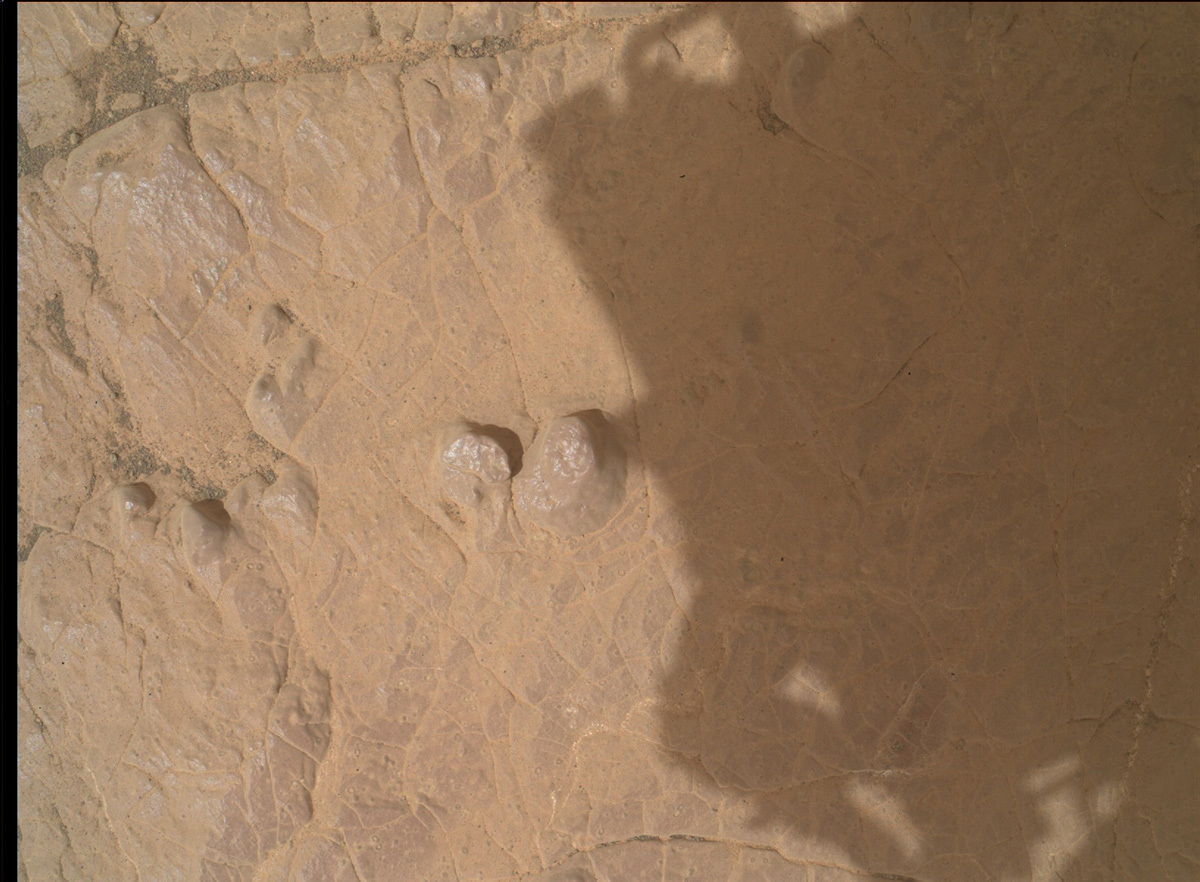MISSION UPDATES | December 18, 2020
Sols 2976-2978: Dun Dun Dun…

This image was taken by Mars Hand Lens Imager (MAHLI) Camera onboard NASA's Mars rover Curiosity on Sol 2974. MAHLI image, taken from 25 cm standoff, showing the nodular target “An Dun” in the centre of the image. Credits: NASA/JPL-Caltech/MSSS. Download image ›
We have not moved since our last plan, to allow us to determine the geochemical composition of some small, resistant, nodular features (“An Dun”) in this workspace, shown in the image above. Although the nodules are not quite as large as the fort they were named after (Dun is Gaelic for “fort”), their height (7 mm) combined with morphology meant that we needed to do our due diligence and ensure that they did not pose a danger to the APXS instrument. Accordingly, MAHLI took some images in the last plan, which were used today to refine placement over the nodules. APXS will do a three-point raster (3 separate placements, separated by 1-2 cms) across An Dun, ensuring that we will have as much of the nodular material in our Field of View (FOV). MAHLI will take some further images of An Dun. To complete the compositional investigation, ChemCam will target An Dun the following day. This ordering, with APXS preceding ChemCam, was important today as it was not possible to use the DRT brush to remove the dust around these protruding features. The active ChemCam LIBS laser can move the dust around, so APXS needed to go first so that we did not inadvertently analyze some dust piled up around the main target! ChemCam is analyzing three bedrock targets in this workspace, “Corserine,” “Pundsar,” and “Tjorn,” all of which will also be documented by Mastcam images.
On the second sol (day) of the plan, we will drive further onto this rubbly material. This short drive (25 meters) will bring us closer to our next science goal – a mini-campaign on a large sand sheet called “Sands of Forvie.” We are eagerly looking forward to getting there, in time for the return to planning in the New Year.
In addition to contact science and driving, Curiosity will be busy monitoring environmental conditions, from dust in the atmosphere to capturing images of active dust devils. APXS will also take overnight measurements to monitor seasonal changes in argon levels, continuing work started with the Spirit and Opportunity rovers.
